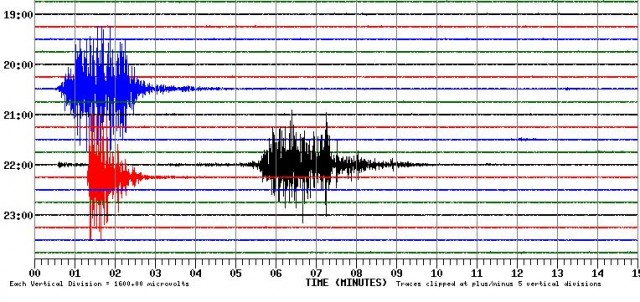12 April 2013
The unusually large Bingham Canyon Mine landslide – an impressive example of prediction using monitoring
Posted by Dave Petley
See also the update to this post here
On Wednesday evening an extremely large – and in the case this is no exaggeration – landslide occurred in the Bingham Canyon copper mine in Utah, USA. According to various news reports, the deforming slope was identified some months ago and monitored intensively. An increasing rate of strain in the hours before failure indicated that a collapse was imminent, and the mining company released a warning about the landslide in advance. The upshot is that although it has caused considerable damage to the mine, there are no casualties.
The scale is impressive. There is a fabulous gallery of images of the landslide on the ksl.com website. These are two of them:
The landslide deserves a separate post interpreting the mechanics – I will do so in the next few days. However, the landslide is sufficiently large that it was detected on seismic networks. Jeff Moore kindly pointed out that the landslide appears on the University of Utah seismic recording station record from Granite Mountain Vault, Salt Lake City:
Meanwhile, Colin Stark noted that the landslide was recorded on the Columbia University global seismic dataset too, which suggests that the volume is in the tens of millions of cubic metres:
2013-04-11 05:05:52 40.75 -111.75 4.9 UTAH 2013-04-11 03:31:04 40.75 -111.75 5.1 UTAH
Note that in both cases the seismic record is for two events (in the Utah dataset these are the blue and black records). Landslides have a characteristic form in seismic records, essentially looking like a hairy caterpillar. I am not sure what the red event is – this does not have this characteristic form. Both landslides were sufficiently large to be picked up by these networks, which means that there were two very large landslide events here, one at 9:31 pm local time and the second at 11:06 pm.
Finally, many people have sent links to this – thanks to you all. I will follow this up with another post in the next couple of days about the mechanics. However, this does demonstrate that lanslides in mines are manageable, a lesson that those operating the mine in Tibet (and indeed elsewhere in China) would be sensible to learn. I will also post again on this landslide in the next day or so – there have been some interesting developments with respect to that one.
See also the update to this post here





 Dave Petley is the Vice-Chancellor of the University of Hull in the United Kingdom. His blog provides commentary and analysis of landslide events occurring worldwide, including the landslides themselves, latest research, and conferences and meetings.
Dave Petley is the Vice-Chancellor of the University of Hull in the United Kingdom. His blog provides commentary and analysis of landslide events occurring worldwide, including the landslides themselves, latest research, and conferences and meetings.
Impressive, but one that was huge as well and long before a lot of the technology and knowledge available now was in Bisbee, Arizona in the Lavender Pit. Pulled all the mine equipment out like 48 hours before it slid into the pit. Optical levels and transits. Phelps Dodge Copper Corporation